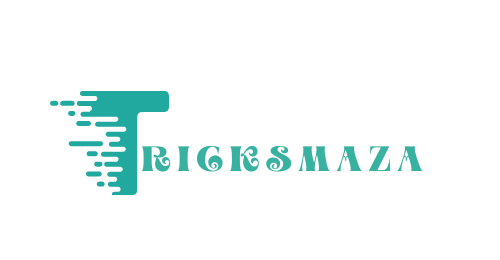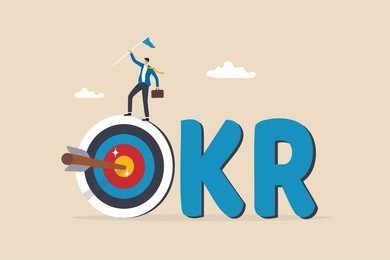In today’s fast-paced tech environment, engineering teams need a robust framework to align their efforts with the company’s strategic goals. Enter OKRs, or Objectives and Key Results. This methodology has been a game-changer for many tech giants, helping them maintain focus, drive engagement, and achieve stellar results. But what exactly are OKRs, and how can they benefit your engineering team?
Understanding OKRs
Definition of OKRs
OKRs stand for Objectives and Key Results. The objective is a clear, concise statement of what you aim to achieve. Key results are specific, measurable milestones that track your progress towards the objective. Together, they create a powerful tool for setting and achieving goals.
History of OKRs
OKRs were popularized by Andy Grove at Intel in the 1970s. Later, John Doerr introduced OKRs to Google, where they became an integral part of the company’s culture. Since then, OKRs have been adopted by numerous organizations worldwide, proving their effectiveness across different industries.
Key Components of OKRs
- Objectives: High-level goals that are ambitious yet achievable. They should be qualitative and inspire action.
- Key Results: Quantitative measures that track the achievement of the objective. They should be specific, time-bound, and verifiable.
Benefits of OKRs in Engineering
Improved Focus and Clarity
Engineering OKRs help teams to stay focused on what truly matters. By clearly defining priorities, teams can avoid distractions and allocate resources more effectively.
Enhanced Alignment
With OKRs, all team members understand how their work contributes to the broader company goals. This alignment fosters collaboration and ensures everyone is moving in the same direction.
Better Performance Tracking
OKRs provide a framework for tracking progress. Regular check-ins and reviews help teams stay on track and make necessary adjustments.
Increased Motivation and Engagement
Clear goals and measurable outcomes can boost morale and motivation. When engineers see the direct impact of their work, they are more engaged and committed.
Setting Effective OKRs
Aligning OKRs with Company Goals
Effective OKRs start with a clear understanding of the company’s strategic objectives. Engineering teams should align their OKRs with these goals to ensure they contribute to the overall mission.
SMART Criteria for OKRs
To set effective OKRs, use the SMART criteria:
- Specific: Objectives should be clear and specific.
- Measurable: Key results should be quantifiable.
- Achievable: Goals should be realistic and attainable.
- Relevant: Objectives should align with broader company goals.
- Time-bound: OKRs should have a clear timeframe.
Step-by-Step Guide to Implementing OKRs
Preparation Phase
Gathering Requirements
Start by understanding the needs and expectations of stakeholders. This involves gathering input from various departments to ensure the OKRs are comprehensive and aligned with company goals.
Engaging Stakeholders
Involve key stakeholders in the OKR-setting process. Their buy-in is crucial for successful implementation.
Defining Clear Objectives
Work with your team to define clear, ambitious objectives. Ensure they are aligned with the company’s strategic goals.
Creating OKRs
Brainstorming Sessions
Hold brainstorming sessions to generate potential OKRs. Encourage all team members to contribute ideas.
Prioritization
Prioritize the most critical objectives and key results. Focus on goals that will have the greatest impact.
Drafting OKRs
Draft the OKRs with clear, concise language. Ensure they are specific, measurable, achievable, relevant, and time-bound.
Communicating OKRs
Team Meetings
Discuss the OKRs in team meetings. Ensure everyone understands the objectives and their roles in achieving them.
Documentation
Document the OKRs in a central location accessible to all team members.
Feedback Loop
Establish a feedback loop to address any concerns and make necessary adjustments.
Executing OKRs
Assigning Responsibilities
Assign specific responsibilities to team members. Clearly define who is accountable for each key result.
Monitoring Progress
Regularly monitor progress towards the OKRs. Use tools and software to track performance.
Regular Check-ins
Hold regular check-ins to review progress and address any issues. Adjust the OKRs as needed based on feedback and changing circumstances.
Reviewing and Reflecting
Mid-Cycle Reviews
Conduct mid-cycle reviews to assess progress and make necessary adjustments.
End-of-Cycle Reviews
At the end of the cycle, review the outcomes. Celebrate successes and analyze any shortcomings.
Learning from Outcomes
Use the insights gained from the reviews to improve future OKRs. Continuous learning is key to sustaining success.
Common Challenges and Solutions
Lack of Understanding
Ensure all team members understand the OKR framework. Provide training and resources as needed.
Resistance to Change
Address resistance by highlighting the benefits of OKRs. Involve skeptics in the process to gain their buy-in.
Poorly Defined OKRs
Avoid vague objectives and key results. Use the SMART criteria to ensure clarity.
Lack of Alignment
Ensure OKRs are aligned with company goals. Regularly review and adjust them as needed.
Insufficient Tracking
Implement tools and processes to track progress. Regular check-ins can help identify and address issues early.
Tools and Software for OKR Implementation
Overview of OKR Tools
Several tools can help streamline the OKR process. These include dedicated OKR software and project management tools.
Comparison of Popular Tools
Compare popular tools based on features, ease of use, and cost. Some popular options include:
- Asana
- Trello
- Jira
- OKR Board
Choosing the Right Tool
Choose a tool that fits your team’s needs and workflow. Consider factors like integration with existing systems, user interface, and support.
Best Practices for Sustaining OKRs
Continuous Learning and Adaptation
Regularly review and adapt your OKR process. Stay open to feedback and make improvements as needed.
Encouraging Open Communication
Foster an environment of open communication. Encourage team members to share their thoughts and feedback.
Regular Training and Workshops
Provide regular training and workshops to keep team members updated on best practices and new tools.
Celebrating Successes
Celebrate successes to keep morale high. Recognize and reward achievements.
Case Studies
Case Study 1: A Successful OKR Implementation
Company A successfully implemented OKRs, leading to a 20% increase in productivity. By aligning their OKRs with strategic goals, they achieved remarkable results.
Case Study 2: Overcoming Challenges in OKR Adoption
Company B faced resistance during their OKR adoption. By involving stakeholders and providing thorough training, they overcame these challenges and saw significant improvements in performance.
Expert Insights
Quotes from Industry Leaders
“OKRs have been transformative for our engineering team. They provide clarity and focus, driving us towards our goals.” – Jane Doe, CTO of TechCorp.
Advice from Experienced Engineers
“Start small and scale up. It’s important to get the basics right before expanding your OKR process.” – John Smith, Senior Engineer at DevInnovate.
Conclusion
Incorporating OKRs into your engineering team’s workflow can lead to significant improvements in focus, alignment, and performance. By following this step-by-step guide, you can successfully implement OKRs and drive your team towards achieving their goals. Start small, involve your team, and continuously learn and adapt your approach for the best results.



More Stories
Dental CRM: Building Strong, Lasting Patient Relationships.
How Shopify Themes Influence Store Speed
Best Practices Fantasy Sports App Development